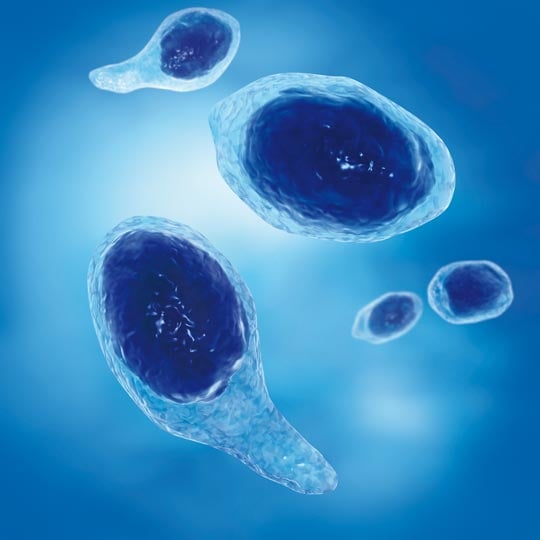HARTMANN SCIENCE CENTER


Throughout the world, the Clostridioides difficile bacterium is known as most common pathogen of nosocomial diarrhoeal diseases often linked to antibiotic therapy. The number of Clostridioides difficile outbreaks and the severity of Clostridioides difficile-associated diseases (CDAD) has increased.
The risk of getting a CDAD is particularly high for older people, especially for those over 65 years of age, and for patients who have to undergo antibiotic therapy due to an infectious disease. Hence, infections and outbreaks are not limited to hospitals, but increasingly also occur in old people’s and nursing homes.
Typical symptoms of mild and moderate diarrhoeal diseases caused by Clostridioides difficile include watery diarrhoea, lower abdominal pain, and sickness. Pseudomembranous colitis may occur with severe courses of the disease. Discontinuing antibiotic therapy is the first treatment that sometimes already suffices. Infections caused by Clostridioides difficile involve toxins: the cell toxins attack the cells of the mucous membrane of the small intestine, thus increasing its permeability.
Direct transmission: via the hands. Here, Clostridioides difficile bacteria are directly transmitted from contaminated hands to contact persons. Particularly the very robust spores are passed out with the stools and may then be spread.
Indirect transmission: via contaminated surfaces. On contact with surfaces the microorganisms get on hands and, from there are transmitted to other persons (cross contamination).

Due to its ability to form spores the pathogen is particularly resistant to environmental influences. With 107 to 109 microorganisms per gram of stool excreted by patients with diarrhoea, there is a rather high risk of the pathogen being spread fast via toilets and contaminated objects.
The German Robert Koch Institute (RKI) recommends an additional handwash after the hand disinfection – especially before preparing food/tube feeding, because the spores are resistant to alcohol-based hand disinfectants. For this, hands are disinfected first. Afterwards, the (dry) hands are thoroughly washed and dried.1This procedure is also recommended in Austria, whereas the World Health Organization (WHO) and some other European countries recommend to only wash hands, or to wash hands followed by disinfection.2, 3From our point of view the procedure recommended in Germany and Austria is to be preferred. The main advantage is that vegetative bacteria including all other possible pathogens are killed by the disinfection before Clostridioides difficile spores are mechanically reduced by washing.
A review of 15 national European guidelines on the prevention of Clostridioides difficile infections was published recently by Martin et al. It shows that most European guidelines recommend chlorine-based disinfectants for environmental disinfection2. The RKI recommends using sodium hypochlorite or oxygen-releasing products based on peroxide compounds1. This also includes products based on magnesium monoperoxyphthalate hexahydrate (MMPP). An oxygen-releaser is also recommended by guidelines from Sweden.2

Sources:
1 Robert Koch Institute. Clostridium difficile - Fact sheets for physicians. www.rki.de (in German; last update: 17 August 2011; accessed 04 February 2015)
2 Martin M et al. (2014) National European guidelines for the prevention of clostridium difficile infection: a systematic qualitative review. Journal of Hospital Infection 87, 212-219
3 World Health Organisation (2009) Guidelines on Hand Hygiene in Health Care http://whqlibdoc.who.int (accessed 04 February 2015)